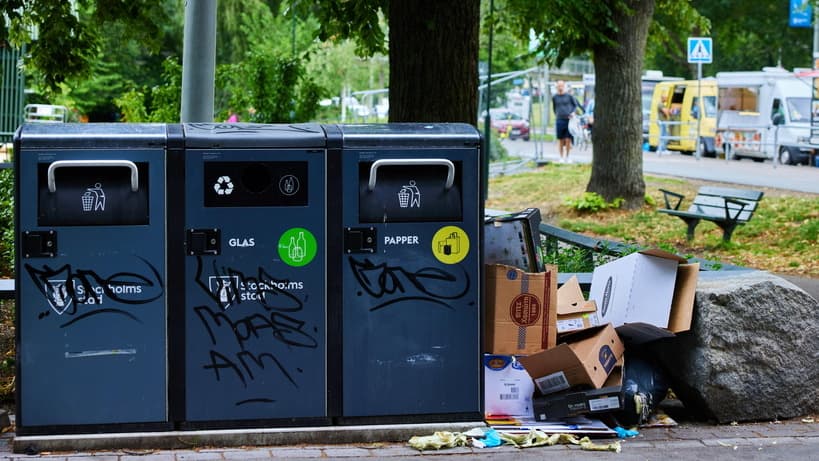Overflowing trash cans, piles of packaging, and other trash. The picnic season is here and leaves its mark on parks and beaches.
Here, the expert provides tips on how to reduce waste and littering.
The warmer the weather, the more trash, says Johanna Ragnartz, CEO of Keep Sweden Clean.
The chance of laying out your picnic blanket on a trash-free spot is virtually non-existent – 0.13 percent. This is shown by a survey of nine Swedish parks in 2023 from Keep Sweden Clean. The most common trash is cigarette butts, snuff packaging, and plastic packaging. Littering is illegal and can result in fines.
On a warm summer day, the trash cans fill up quickly. Then, the trash is often placed next to the trash can.
On the other hand, you have to think: Now it's full, so I'll take the trash with me, says Ragnartz.
Trash Spreads
Plastic blows away easily and spreads to forests and water. The trash attracts birds – and rats. Instead, the trash should be taken home or thrown away in another trash can further away.
A special trash bag for the picnic makes it easier. Reusable plates, cutlery, and mugs, as well as ice cream in a thermos, are also good for reducing waste. It gets harder with a spontaneous picnic – so make sure to throw away the trash properly, urges Ragnartz.
P Picnic Food Over
Four out of ten Swedes never or rarely think about food waste in connection with their picnic, according to a survey conducted by Verian on behalf of the food rescue company Too Good to Go.
Seven out of ten have leftover food after the picnic – often bread, snacks, fruit, and berries. Just over half take the leftovers home, while 22 percent throw them away due to concerns that the food has gone bad from being left out. 15 percent do not think it's worth saving the leftovers, and 9 percent don't have the energy to take them home.
According to Sofia Edholm, Sweden Manager at Too Good to Go, there is a great awareness of food waste in general – but not in the context of picnics. Food waste is about many small streams, she emphasizes.
Fruit that's starting to look sad can be used in a smoothie, and a bread piece can become croutons.
Bring a cooler bag with cooling elements on the picnic. Leftovers stored in the cooler bag and still feeling cold are safe to eat.
Bacteria dislike foods that are sour, salty, dry, or very sweet. This applies to foods like bread, pastry, dried ham, salami, hard cheese, and whole fruits and vegetables. They fare better in warm temperatures.
Prepared food, such as pasta salad, holds up worse but can last for a couple of hours. Other sensitive foods are milk, fresh meat, poultry, and fish.
Source: Åsa Rosengren, advisor and microbiologist at the National Food Agency





